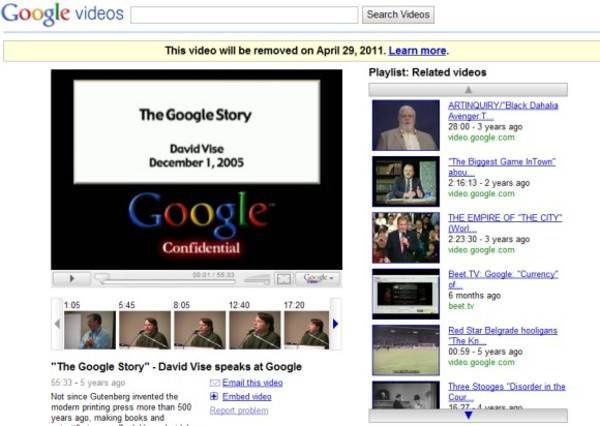Long before Google acquired YouTube, it had its own rival video service, aptly titled Google Video. True, Google Video never had the viral power of YouTube, but it was a place where you could upload video content that was longer than YouTube’s 5 minute limit. And even though the site hasn’t allowed uploads since 2009, there’s still a lot of content there – some 2.8 million videos, according to Google Operating System.

Google Video became a video search engine rather than a storage and sharing site, but now it’s official: it’s shutting down. Effective April 29, videos will no longer be available for playback. If you’ve uploaded files there, you have until May 13 to download your content.
Google has emailed video owners to that effect, notifying them of the need to download their files and host them elsewhere. There is no push button to migrate to YouTube, no plans to move the videos en masse. There can’t be, really, as there would be licensing and copyright issues galore with a merge of the two systems without verifying ownership.

Download the Videos, Archive the Videos
Instead, Google instructs users to download their videos manually. (You’ll see a “download” option next to your videos, which will change to “already downloaded” once you’ve succesfully done so.)
Of course, users might have been wise to have started this process when the service axed uploads in 2009,. But if they haven’t, there’s no time to waste. If they don’t, the content will be effectively lost.
“It’s really disappointing,” says Google Operating System, surmising that a lot of content probably won’t be moved.
To that end, the Archive Team are scrambling to save as much material as possible. The Archive Team helps preserve dead and dying websites, and with a month’s notice before Google Video is shuttered, they’re working to set up ways to scrape and save the data. (Those interested in helping can find more information here.)
Archive.org has donated 100 TB for storage in support of the effort.
Image credits: Google Operation System





















